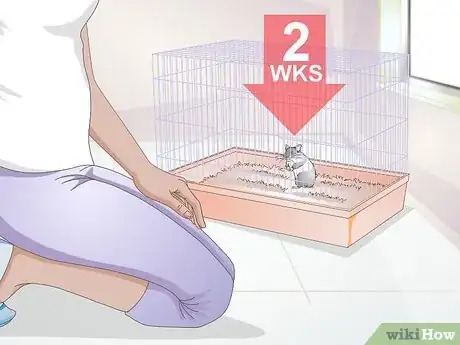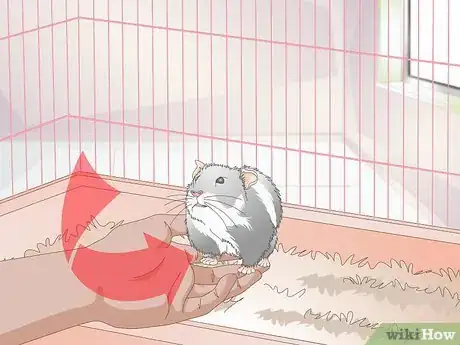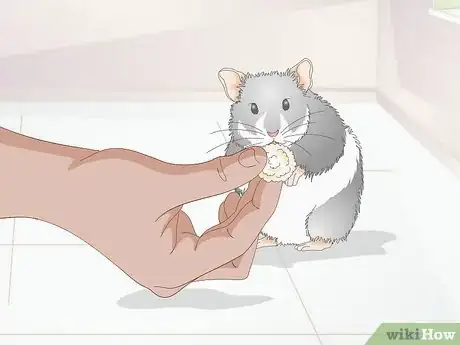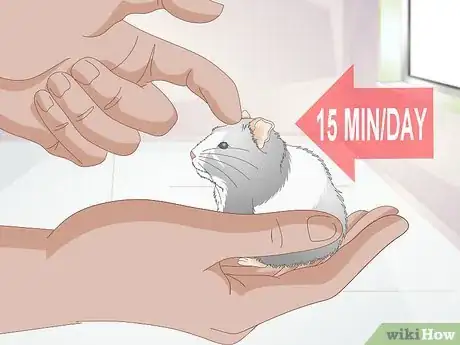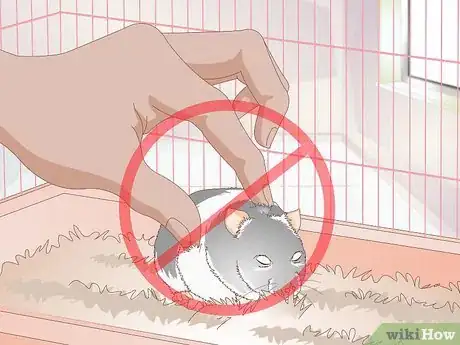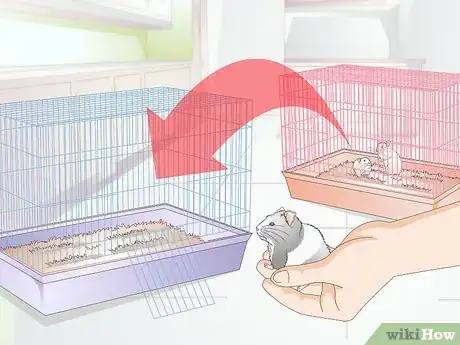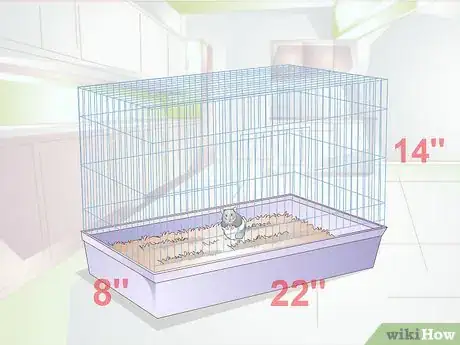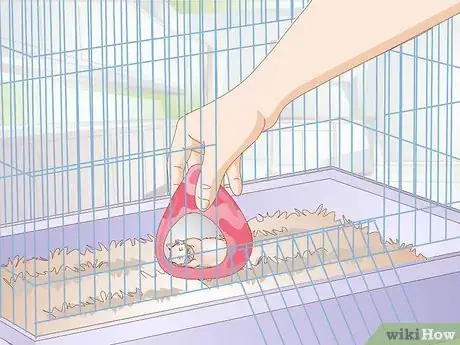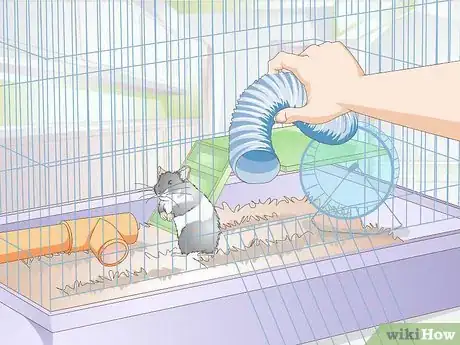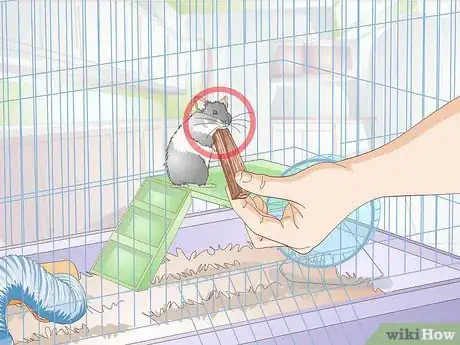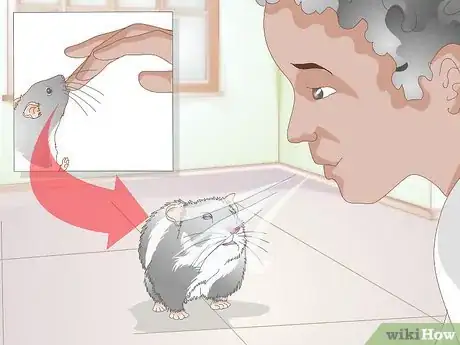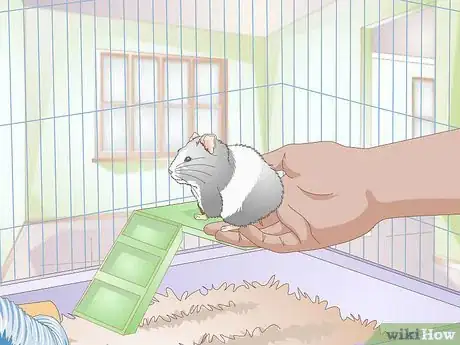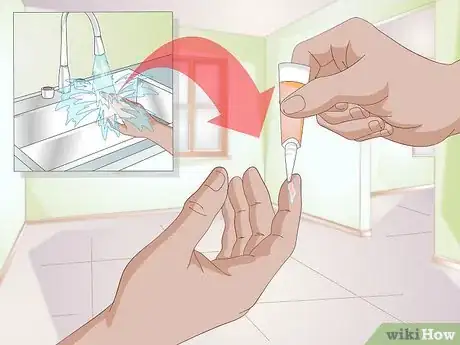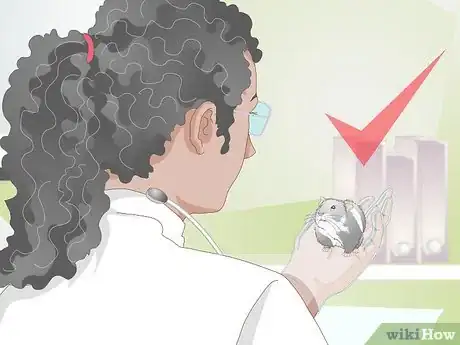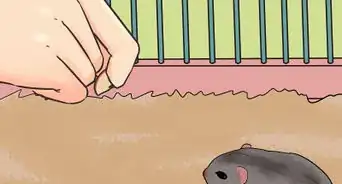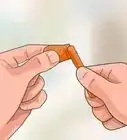This article was co-authored by Pippa Elliott, MRCVS. Dr. Elliott, BVMS, MRCVS is a veterinarian with over 30 years of experience in veterinary surgery and companion animal practice. She graduated from the University of Glasgow in 1987 with a degree in veterinary medicine and surgery. She has worked at the same animal clinic in her hometown for over 20 years.
There are 12 references cited in this article, which can be found at the bottom of the page.
This article has been viewed 28,696 times.
Hamsters are known to bite. This is because they are prey animals, and they may be frightened of you. There are ways to discourage and prevent your hamster from this behavior. Training your hamster to be held can reduce the risk of biting. It is also important that your hamster has a secure cage with plenty of space, toys, and chewable objects. If you are bitten, however, you should take the proper steps to care for the wound and for your hamster.
Steps
Training Your Hamster to be Held
-
1Allow a new hamster to settle in the cage. If your brand new hamster is biting, it may mean that the hamster has not adapted to their new settings. Give the hamster a week or two to become used to their new cage, smells, and surroundings. This adjustment period will make the hamster feel more secure and less threatened.
- You can try sitting next to the cage and talking to your hamster so that it becomes used to your presence.
- Do not touch the hamster or put your hand in their cage during this time.[1]
-
2Wash your hands before handling. Hamsters are more likely to bite you if they smell food on your hands. Try to use a soap that has no perfume or scent. Hand-washing is also a good habit to prevent the spread of disease.
- If it makes you feel safer, you can wear gloves while training your hamster. That said, gloves will do little to stop the biting. They only protect you.
Advertisement -
3Cup your hand beneath the hamster’s stomach. Grabbing a hamster around their back or body may startle them. Instead, lower your hand into the cage, and scoop under the hamster. Gently raise the hamster out of the cage, using your other hand to catch the hamster if it falls.[2]
- If your hamster does not like to be lifted, you can place a bowl with sunflower seeds inside the cage. Wait for your hamster to crawl into the bowl before lifting the bowl out of the cage.[3]
-
4Set up a playpen area. Block off an area where your hamster can safely play. Exercising outside of their cage will improve the hamster's mood, and it will teach them that you are not a threat. You can use books, wire pet fences, or pillows. Make sure that all doors are closed in the room, just in case the hamster does slip out of their play area. Allow the hamster to wander over the floor and around your hands.
- Supervise your hamster carefully, and remember that hamsters like to climb.
-
5Give them treats in your hand. This will show them that you are friendly, and it will reward them for being around you. The hamster may realize that you will not hurt them. Good treats include:
- A small piece of cauliflower
- An apple slice
- Raisins
- Green, leafy vegetables[4]
-
6Hold them for five to fifteen minutes daily. Daily handling sessions will quickly familiarize your hamster with your scent and presence. Hamsters do not have good sight, so allowing them to sniff around you will help them become comfortable with you. Biting should end after a few weeks of such sessions.
-
7Avoid waking your hamster up. Hamsters are nocturnal creatures, and it may be tempting to wake them up in middle of the day when you want to play with them. If you do this, however, they may bite you. It is best to only handle hamsters when they are already awake.[5]
Providing a Safe and Happy Home
-
1Separate hamsters into different cages. Syrian hamsters are territorial, and they like to live alone. If you keep two or more in a cage together, they may fight each other. This will cause injury to many of them, and it may make them more aggressive towards you.
- Dwarf hamsters live in pairs, so you may keep two together in the same cage. Choose two hamsters of the same sex to prevent breeding.[6]
-
2Make sure that your cage is big enough. Hamsters need plenty of room to exercise and move around in. If you don’t give them the proper space, they may become cranky. A cage should be at least 22 x 14 x 8 inches.
-
3Provide your hamster with a cave to sleep in. Hamsters like to sleep in small, enclosed spaces. They will often create dens in boxes or tunnels in their cage.[7] This makes them feel safer in their cage, and it will help improve the quality of their sleep, making them happier animals. You may be able to give them a more secure space by providing them with a cave in their cage, such as a:
- Flowerpot
- Coconut shell
- Small box
- Dome
-
4Give your hamster toys. Active hamsters are happy hamsters. Hamsters need plenty of exercise, or they may become grumpy. Hamsters like to run, climb, and burrow. Small toys that satisfy these needs include:
- Plastic wheel (wire wheels may injure their legs)
- Ladders to climb on
- Wooden balls
- Tunnels and mazes
-
5Place chew toys in the cage. Hamsters are natural chewers, and if they bite frequently, it may be because they have nothing to chew on in their cage. You can give them walnut shells, unpainted oak or Cherrywood squares, wooden balls, paper towel tubes, and rolled oats.
- Once a week, put a small, hard dog biscuit in the cage. They will think it is delicious, and it will help satisfy their urge to chew.[8]
Responding to a Bite
-
1Blow in your hamster’s face. Immediately after it bites, give a quick, gentle puff of air in its face. This will distract the hamster from biting while not harming them. It will also encourage them to let go of you.
-
2Return the hamster to their cage. Lower the hamster into the cage. Remember not to grab your hamster around the sides as you do so. The hamster will need time to cool off before you handle them again. If the hamster is still biting your skin, you can gently pry them off of you.[9]
-
3Treat the wound. Wash the bite with warm water. Use antibacterial soap. You can also apply an antibacterial ointment on the wound. If you are bleeding or skin was broken, put a bandage or light dressing on the wound. Watch the wound for swelling. If swelling does not go away after three days, visit a doctor.[10]
-
4Take your hamster to the vet. Constant biting may be a sign of health problems. Visiting the vet will also ensure that it does not have any health problems or diseases that it could pass onto you.[13]
Warnings
- Don't stick your hand in your hamster's cage. It could be caught unaware, causing them to bite.⧼thumbs_response⧽
References
- ↑ http://thehamsterhouse.com/hamster-info/hamster-behavior/why-do-hamsters-bite/
- ↑ http://thehamsterhouse.com/hamster-info/hamster-behavior/why-do-hamsters-bite/
- ↑ http://animalrightscoalition.com/doc/hamster_factsheet.pdf
- ↑ http://www.humanesociety.org/animals/hamsters/tips/hamster_feeding.html
- ↑ http://www.humanesociety.org/animals/hamsters/tips/hamsters_as_pets.html?credit=web_id139895439
- ↑ http://thehamsterhouse.com/hamster-info/hamster-behavior/why-do-hamsters-fight-each-other/
- ↑ https://www.aspca.org/sites/default/files/upload/images/hamster_edu.pdf
- ↑ http://www.humanesociety.org/animals/hamsters/tips/hamster_feeding.html
- ↑ http://thehamsterhouse.com/hamster-info/hamster-behavior/why-do-hamsters-bite/
- ↑ https://www.ok.gov/health2/documents/Animal%20Bite%20Treatment%202008.pdf
- ↑ https://www.healthychildren.org/English/health-issues/conditions/from-insects-animals/Pages/Hamsters-and-Mice-Can-Cause-Illness.aspx
- ↑ http://www.humanesociety.org/animals/hamsters/tips/hamsters_as_pets.html?credit=web_id139895439
- ↑ http://www.cdc.gov/healthypets/pets/small-mammals/
